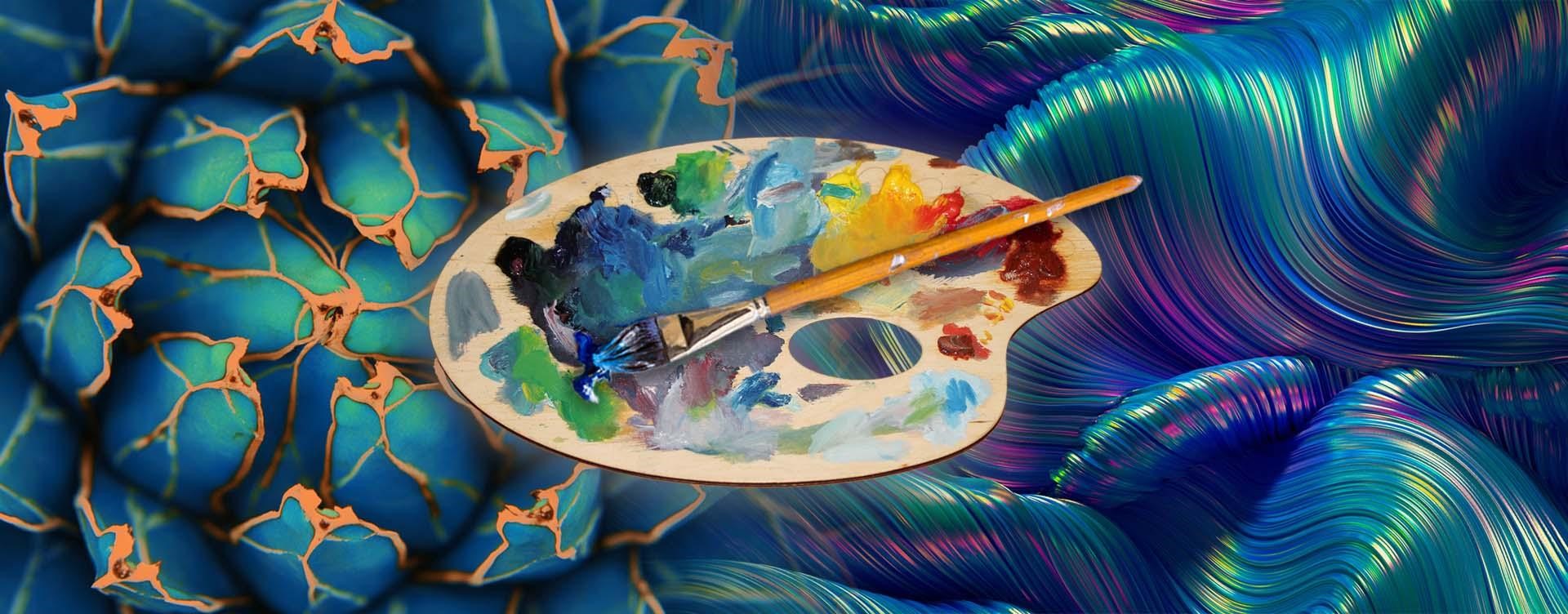Image credit: Image provided by Foundry
This article was sponsored by Foundry in support of the SIGGRAPH 2022 Student Volunteers.
Texturing is the key to digital storytelling. It governs the visual worlds we are presented on our screens, bringing our content to life in a way that makes us want to fully immerse ourselves in the story. Without it, these worlds would be dull and the characters would lack the depth texturing adds to them.
It is thanks to advancing painting and texturing technologies that we, as audiences, are blessed with such detailed worlds in our content. Software has come a long way since digital texturing first graced our screens and keeps giving us more realistic and lifelike worlds.
Mari is among the technologies spearheading the need for detailed textures and making it easier for artists to be able to create them. The software’s most recent release, Mari 5.0, is no different. It strives to give artists more advanced tools for their texturing, with enhanced painting, proceduralism, pipelines, and performance.
We sat down with Charli Holt, associate product manager — Mari, to discuss her thoughts on the advancement of digital texturing, why it’s an important tool for students to learn, and how Mari 5.0 is helping artists to become better storytellers.
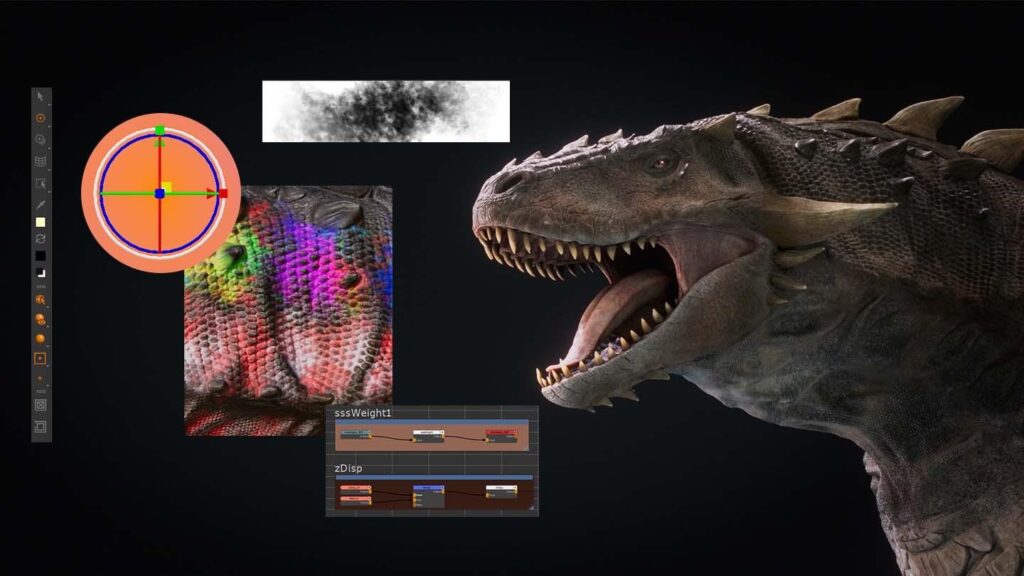
Why is texturing so important to storytelling?
Charli Holt (CH): As creatives, whenever we sit down to start a new project, the very first thing we ask ourselves is “What am I trying to say?” and “What story do I want to tell?” After that, every part of the creative process, from choosing what materials we’ll use to the style, is a building block toward how we want to convey that story.
In the 3D pipeline, I like to think of texturing as world building. When we consider making a film or any type of visual content without textures, the results are likely going to be quite bland. In film, animation, VFX, and games, assets can be incredibly detailed but the texture artist breathes life into every creation.
We paint a story that shows us why the rust forms in that particular place on a gate. It shows us how the buttons on a character’s jacket have worn over time as they fiddle with their pockets when they’re nervous. Even when we step back from realism and create more stylized content, the texture artist’s role is to hone in on that believability — to sell that this asset, creature, or character truly belongs in this world. A world builder who can sell you a story that feels real and relatable even when it might not look like it.
Texturing is not just important to storytelling, it is the story.
What does Mari bring to the texturing and storytelling process?
CH: Mari, like a favorite pen to a writer, is a tool of creation. With Mari’s strengths lying in the scalability of its toolset, the flexibility of its nodegraph, and the power of its projection system, there is no limit on what artists can create. Mari is not just for the hyperreal hero asset, it’s also great for stylistic projects, small props, and reusable materials.
Mari gives storytellers the tools that allow them to tell the story exactly the way they want, without restraint.
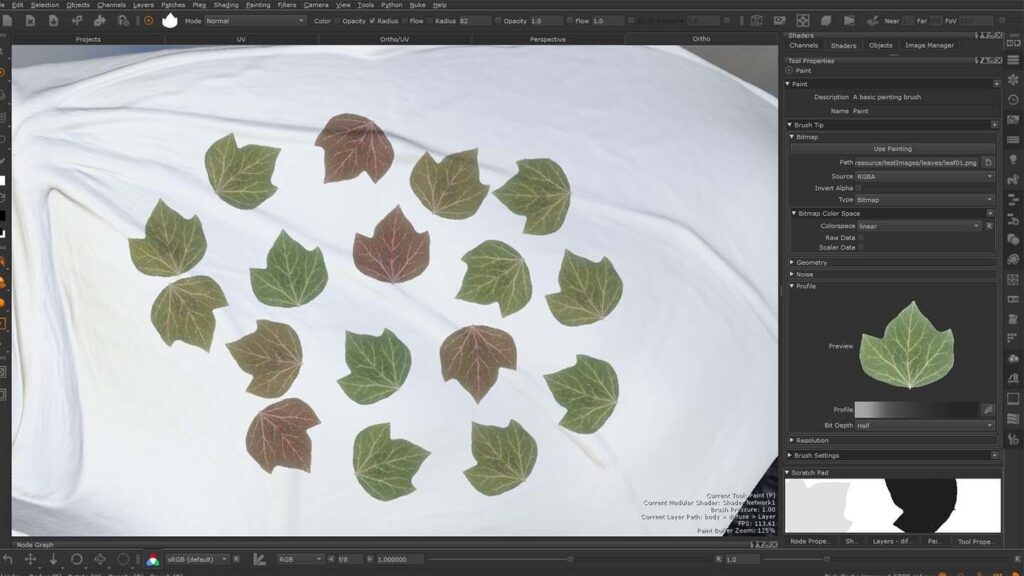
How have modern texturing technologies like Mari evolved since their conception?
CH: While the traditional texturing techniques haven’t changed since early cinema, digital tools have evolved to match and enhance our methods. Let’s say I wanted to texture an alien creature. In times past, this might’ve been created as a physical prop department miniature which would be painted and styled to capture the aesthetic of the movie and the desired level of realism. Perhaps you’d start with a base color all over, go in and add a wash of shadowy dark colors in the crevices, and then build up additional layers of details as you go.
When texturing first began in other applications and in Mari’s early days, the methods we would use to texture an asset were still grounded in the roots of that hand-painted process. Texture artists would more often than not hand paint textures in that same layered approach, be that in 2D or in 3D, in a manual way.
As technology has advanced, our processes and workflows have also evolved to meet the industry’s growing demand with a focus on speed and scalability. New digitally exclusive techniques like the nodegraph and its proceduralism remove some of the overhead and burdens texturing artists often face. We can still choose to work in layers and build up textures manually, but with Mari and the nodegraph, we can now quickly create textures that are fully procedural — meaning that we don’t even have to paint more than a mask to create a result with depth and variation. Workflows are evolving to put more focus on automating and speeding up repetitive processes in order to free up the artist to spend more time on putting creative touches into their work.
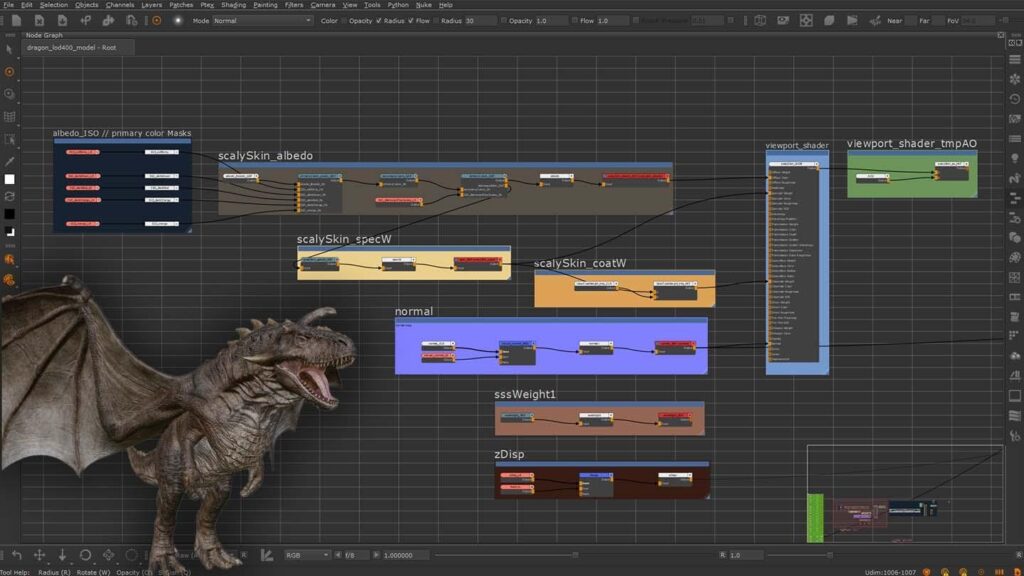
Why should students learn Mari?
CH:If you are looking to work in texturing or even pick it up as a hobby, learning Mari should be on your radar, no matter which industry you’re hoping to move into. Mari is extremely good at forcing you to learn the fundamentals of texture theory by showing you how each of your individual texture maps (your albedo, your specular, your bump maps, etc.) contribute to the overall shader, and therefore the overall look of your asset. It goes beyond the simplicities of tweaking and adjusting sliders until something looks correct, but instead truly encourages you to understand what makes up a believable material and texture.
My wholehearted advice to anyone unsure on whether or not to learn Mari is to give it a try — there is no one right way to texture. You should never lock yourself into one specific software because it limits your options further in your career. By learning Mari you will be teaching yourself vital transferable skills and understanding that will benefit you in any texturing role, in any company, in any industry be that VFX, animation, or games.
What new or improved features in Mari are the best for artists texturing workflows? Why?
CH: Bake Point Filters and the new Image Brush updates are going to become key to enabling artists to work smarter not harder. There’s a lot of creative freedom there in both features. For instance, with the image brush, artists can use a full RGB image and use the red, green, and blue channels individually. That also means artists can start combining skin maps and get them to work as a multi-channeled brush stamp, instead of having to project images onto the model. It opens up some real flexibility for artists there.
With the Bake Point Filters, the days of destructively baking blurs in order to create curvature maps are gone. Instead, everything can be streamlined within your nodegraph, previewed, adjusted, and changed at any point without ever having to commit a destructive bake to your work.
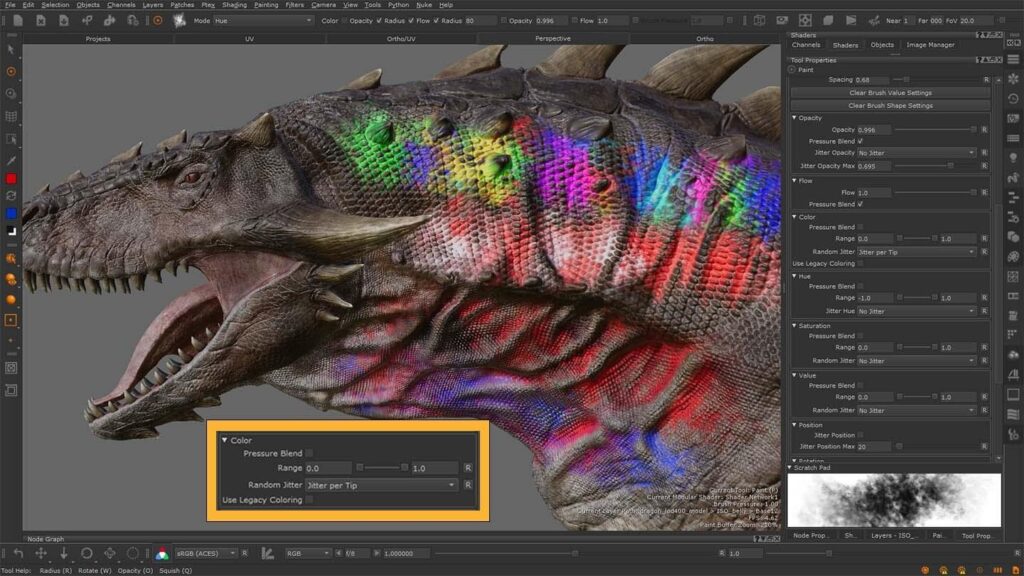
Do you have any advice for those looking to get into the industry and/or become a texture artist?
CH: Immerse yourself in the communities and learn from your fellow artists. Even now, I learn something new every day by being involved in social media groups, going to events, and just generally talking to artists about their work. We are in a unique industry where the only people who truly understand what we’re doing are other artists. More often than not, reaching out to ask for feedback or messaging an artist about how they work has positive results — the worst thing they can do is say no!
If you’re aiming to get started in texturing, the best advice I can give is not to write off trying out a tool because it looks difficult. Learn and try everything you can and you will certainly be rewarded when looking for roles within the industry. Mari is great at teaching you transferable skills and texturing theory that will be a huge benefit in any role using any texturing application.
We have a number of tutorials available on our Learn site which can help you develop and hone your Mari skills, alongside a non-commercial version and student licenses for those who need them. We also work closely with Access VFX who has a great number of resources available for students.
What does the future hold for Mari? What can artists expect to get from this product?
CH: Educating ourselves on both our artists’ needs and the direction of our industry is extremely important to us here at Foundry. The Mari team spends a lot of our time within the texturing community, and we love hearing from all artists regardless of whether they are just starting out, working as a freelancer, or integrated into a larger studio pipeline.
Mari continues to dedicate itself to making the artist experience better and improving quality of life, and Mari 5.0 is a continuation of our story. Our focus is not always just on the new features — we’re always eager to go back and polish the areas we know can have a positive impact on your day to day. Looking ahead, this year, we are committed to increasing Mari’s pipeline ability by building upon our USD workflows, but we’re also on the hunt to keep adding more procedural and painting tools for our artists.
If you have a suggestion or idea, please do let us know via our support portal or on our community — we’re always excited to hear about what’s important to you!
